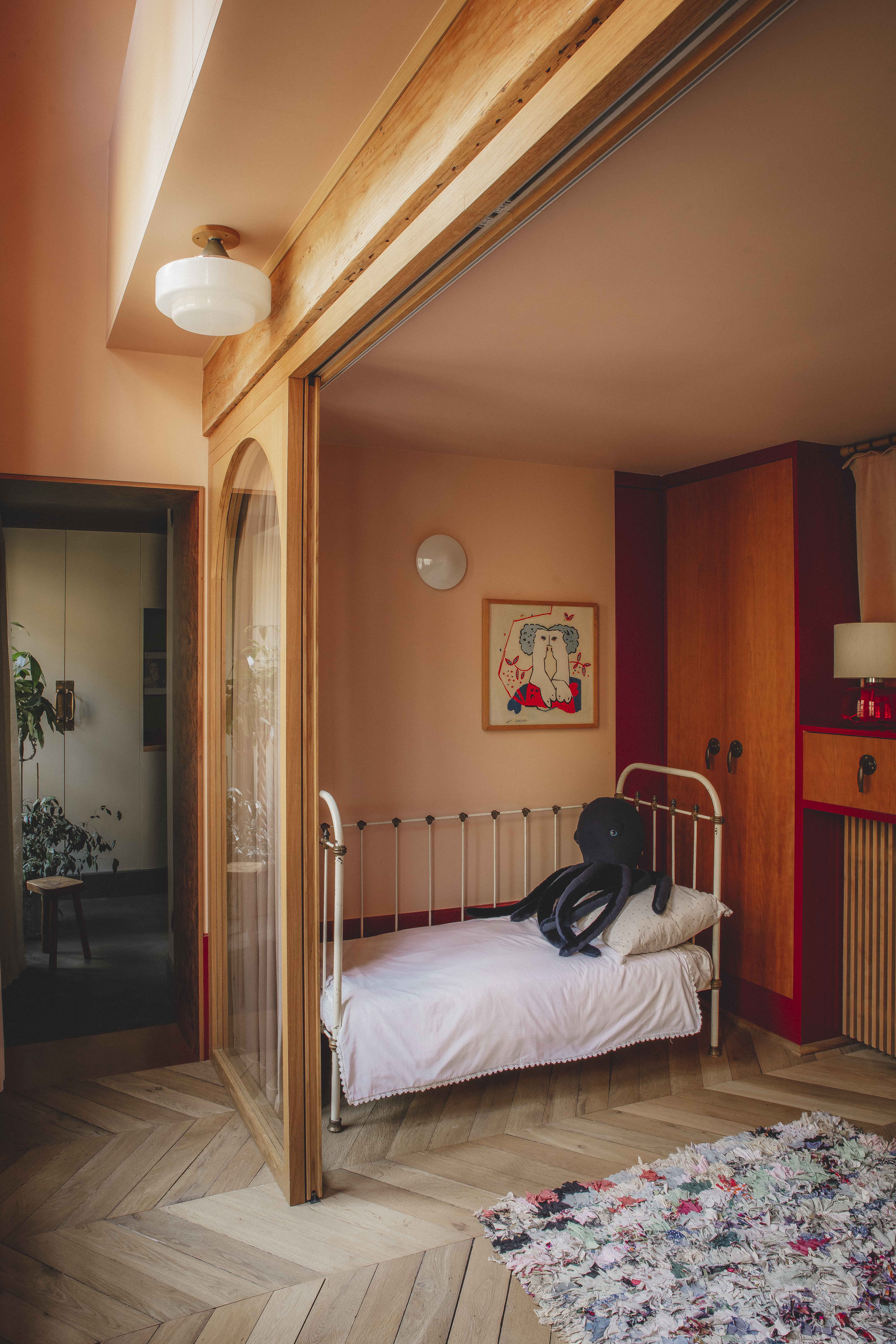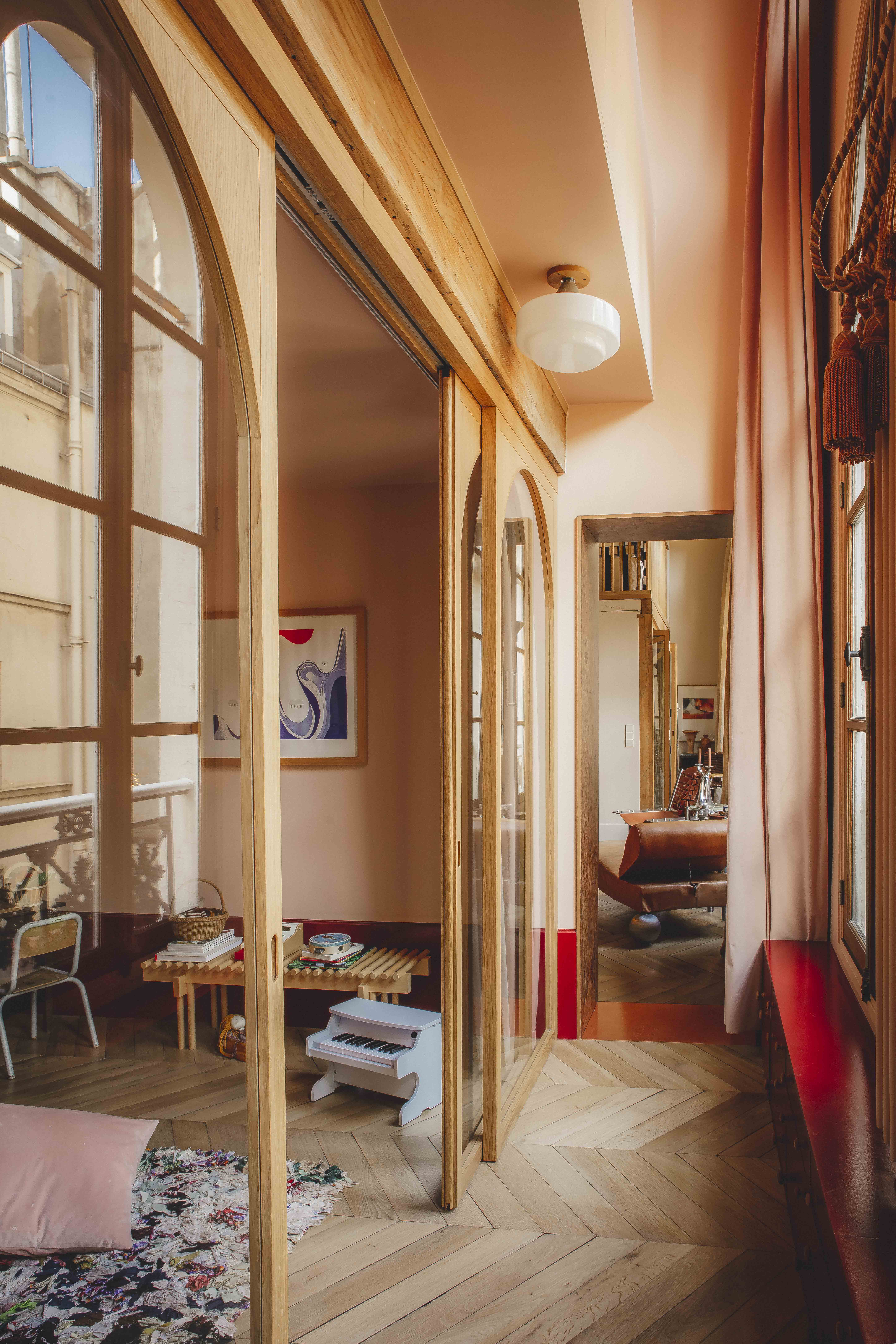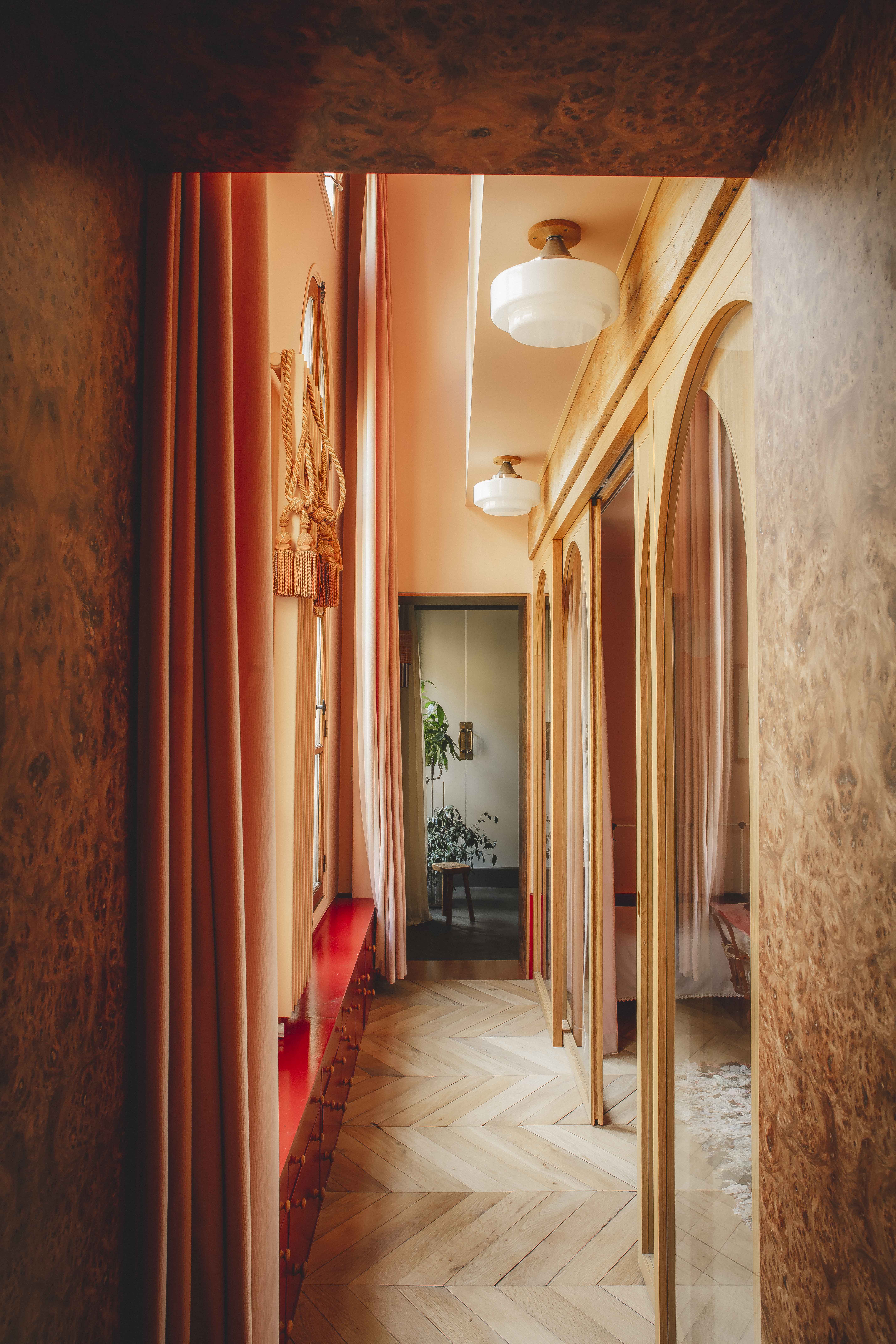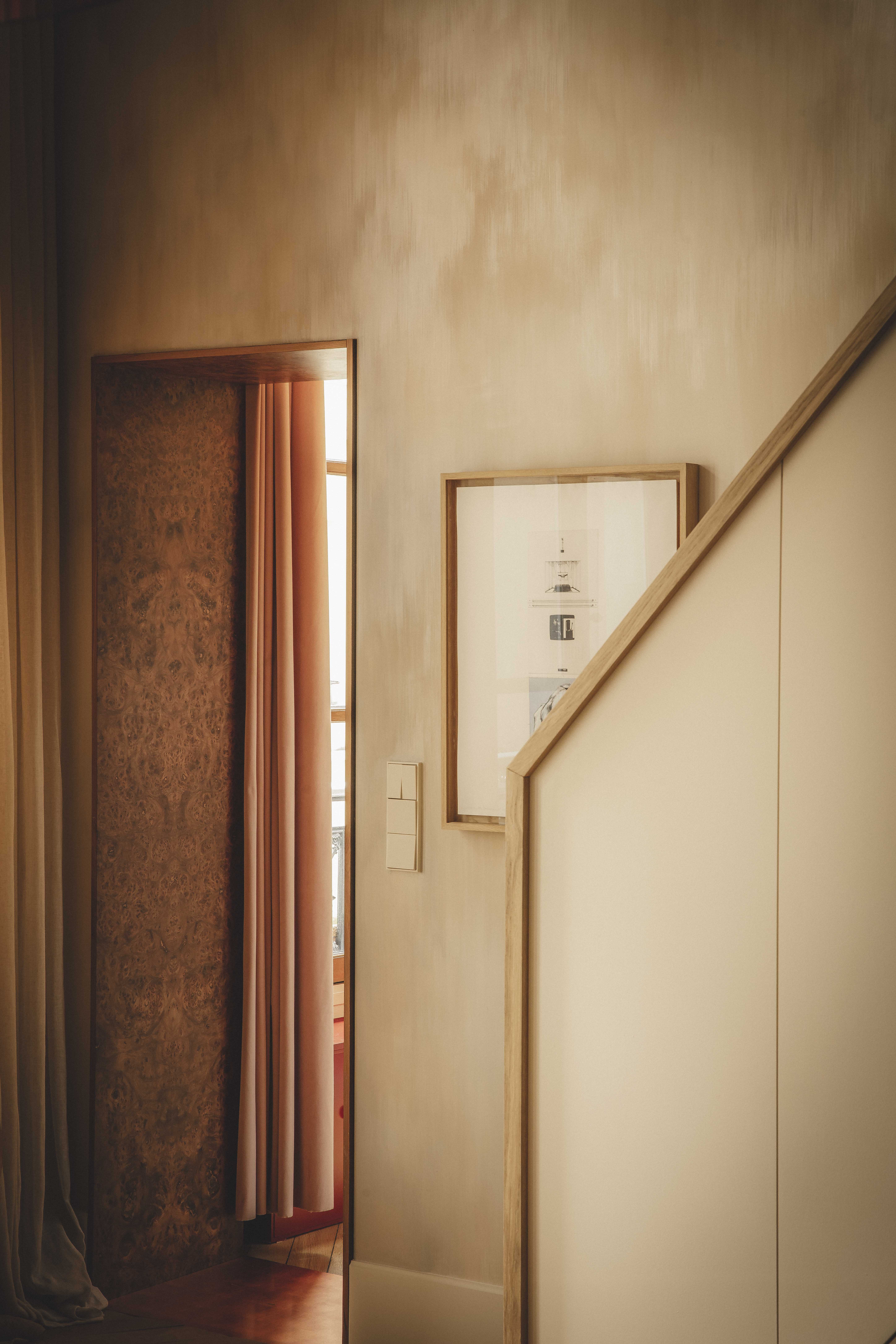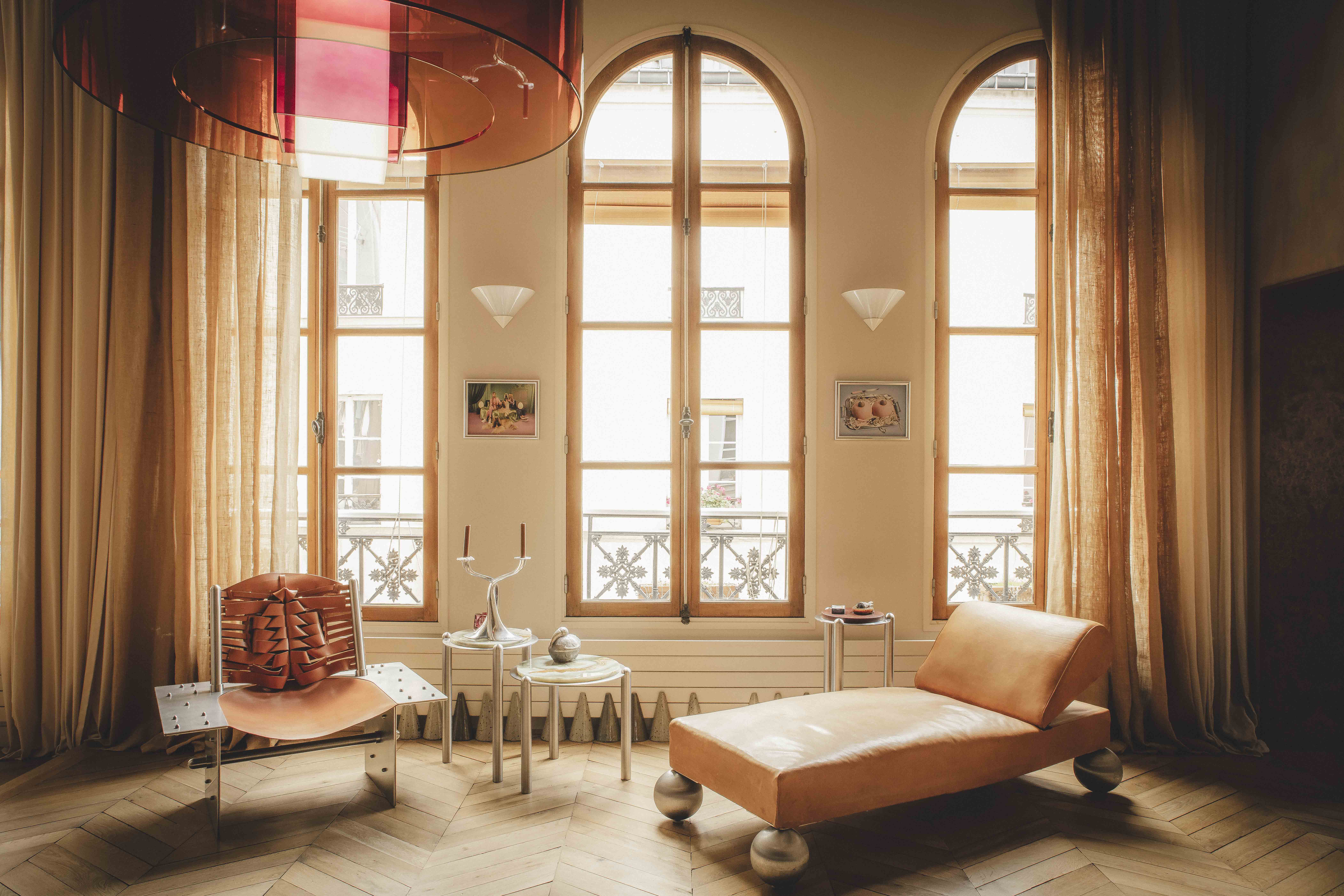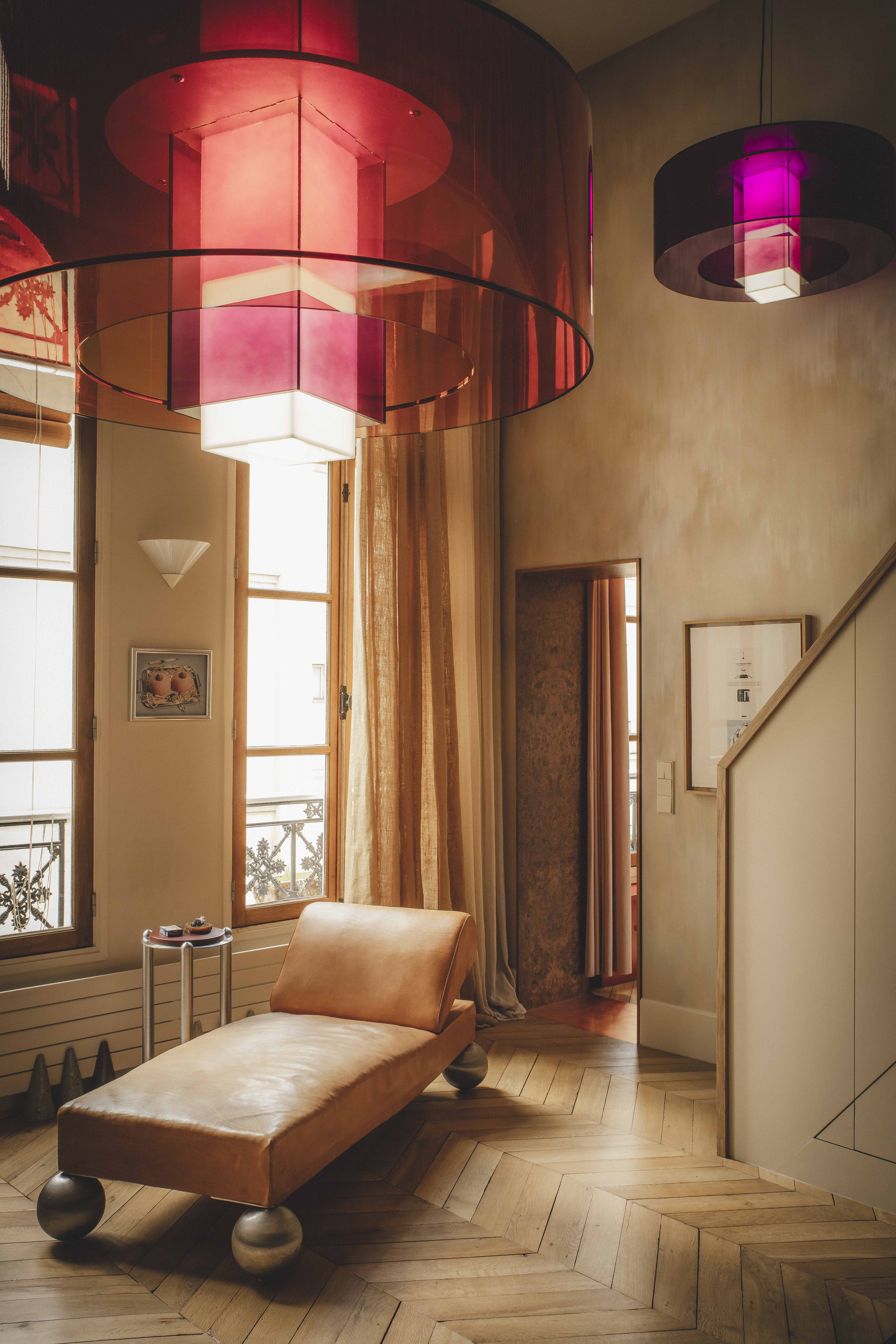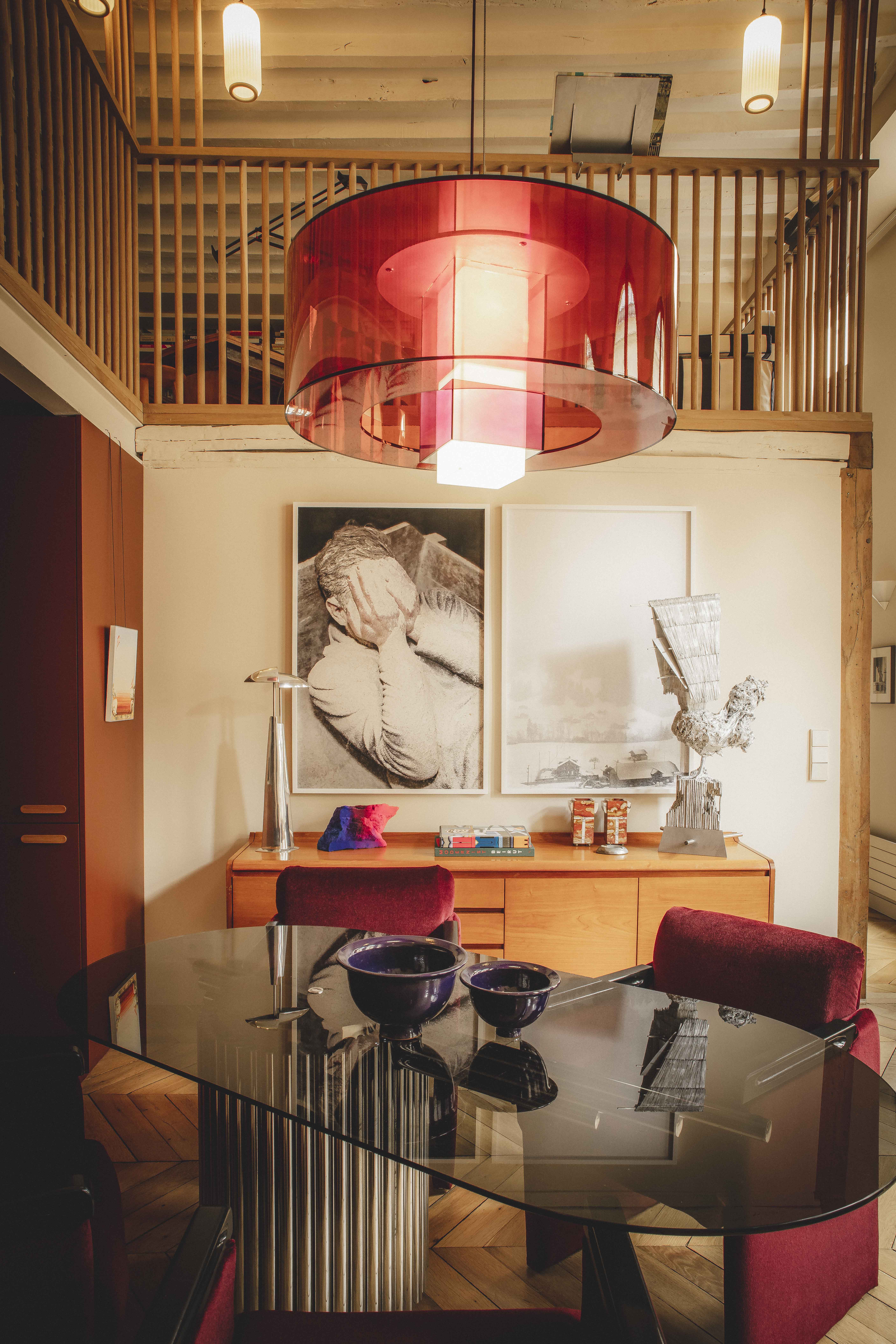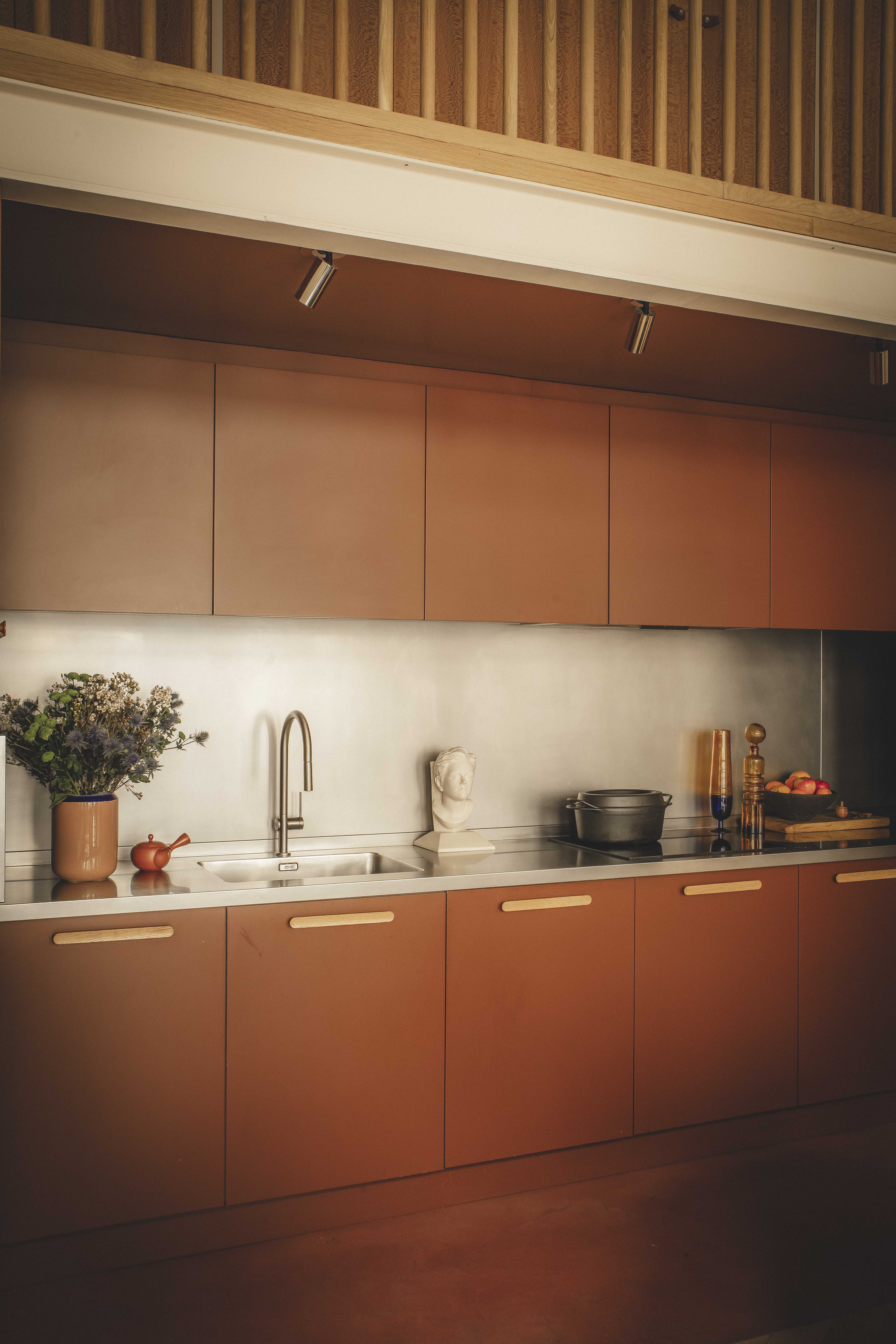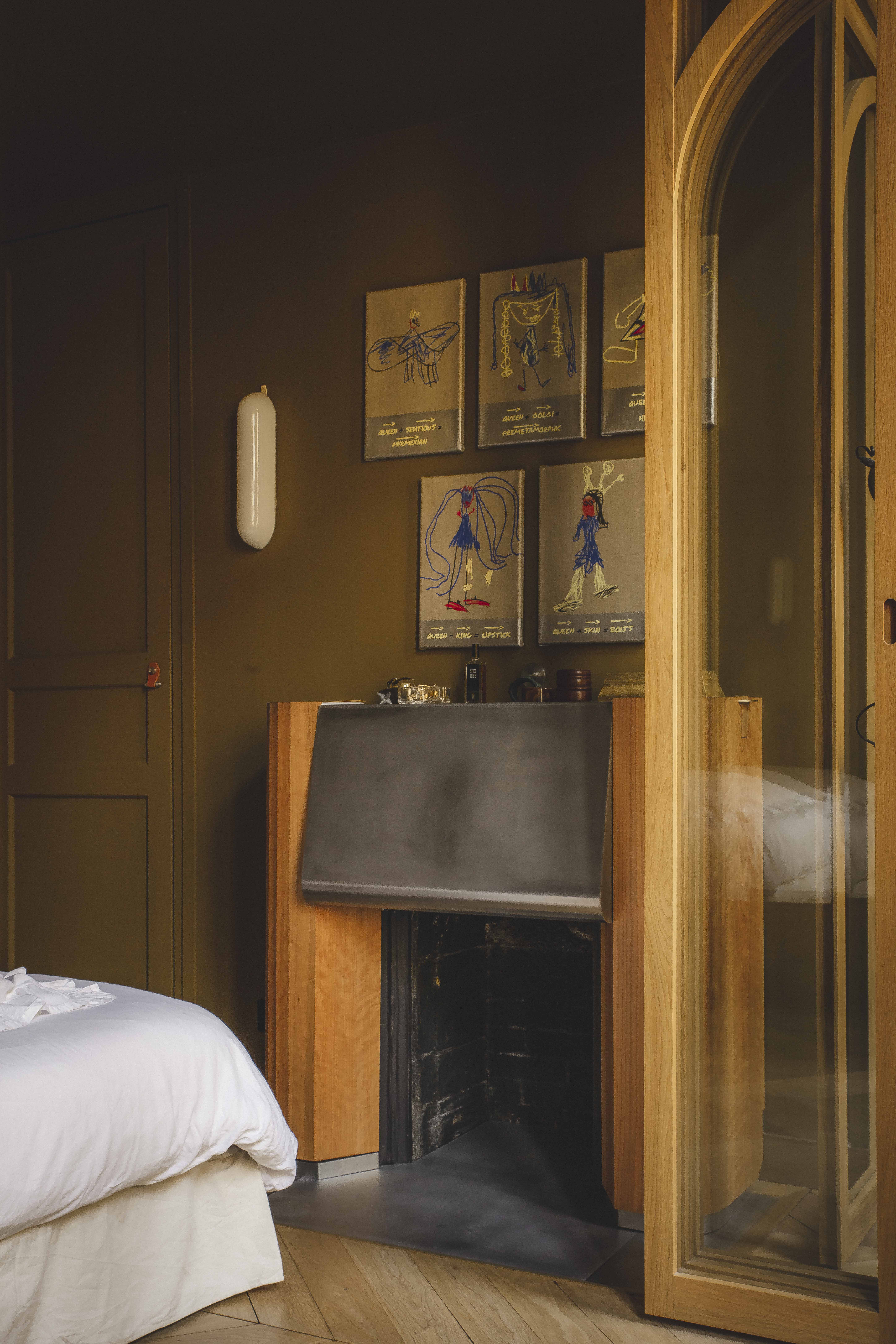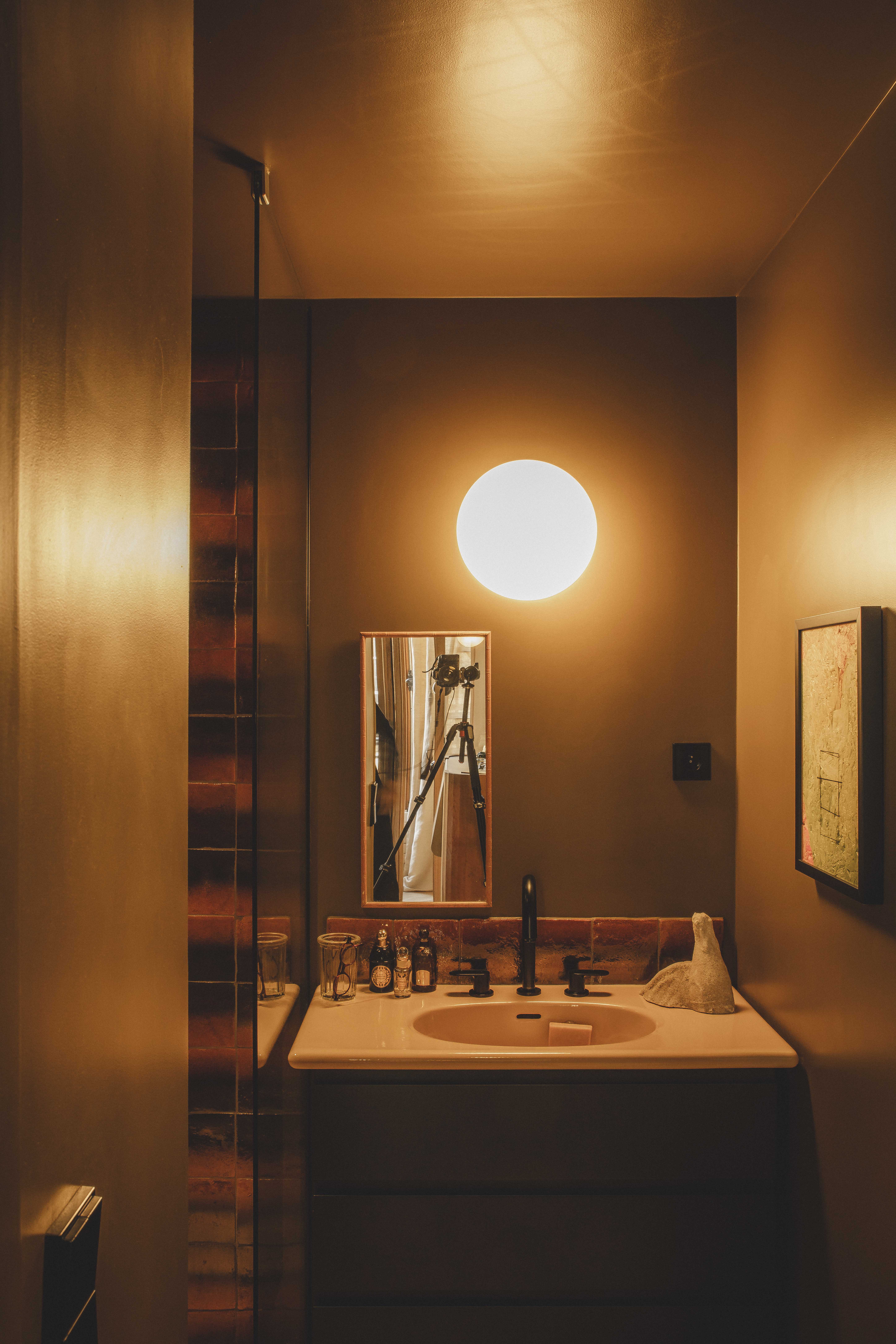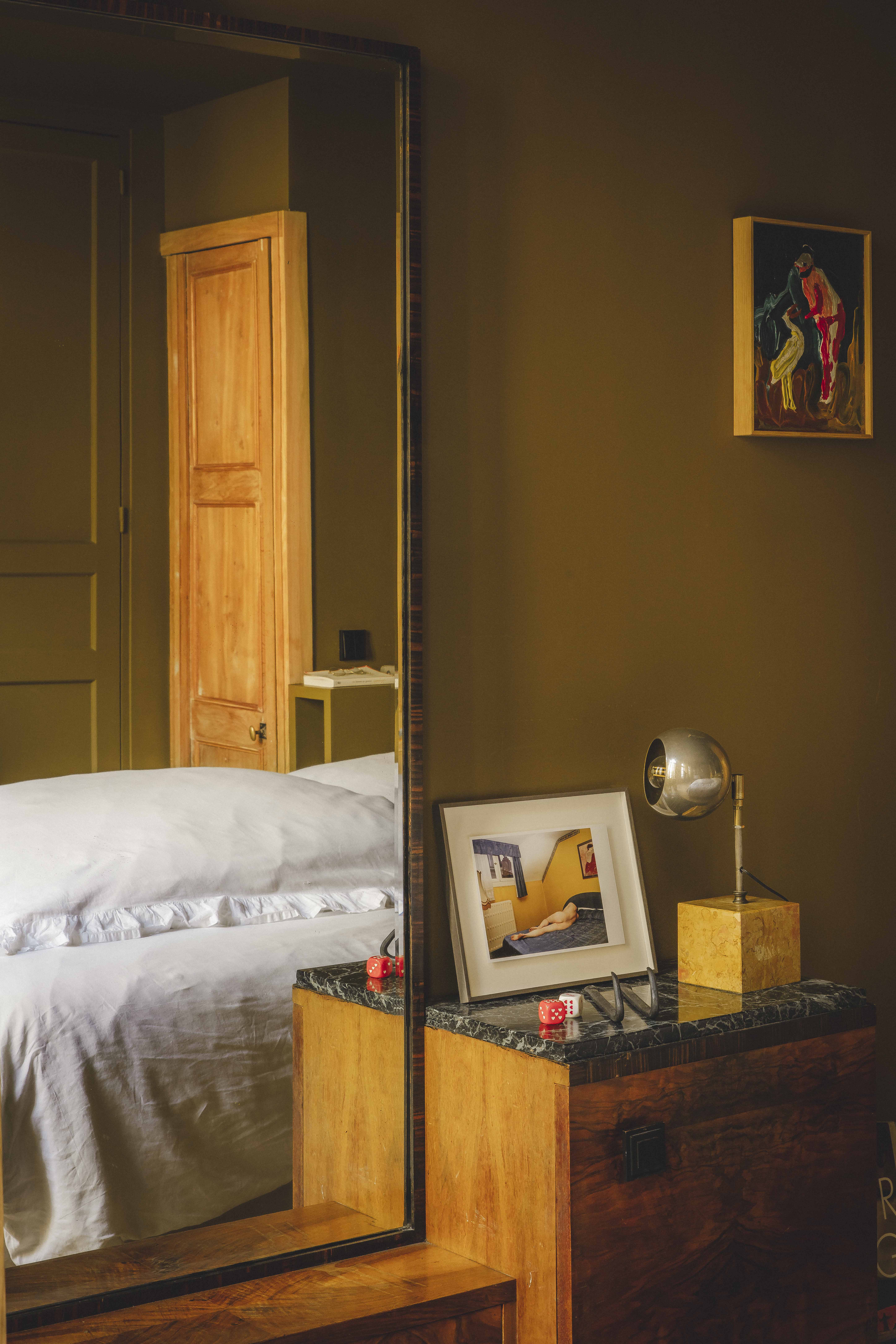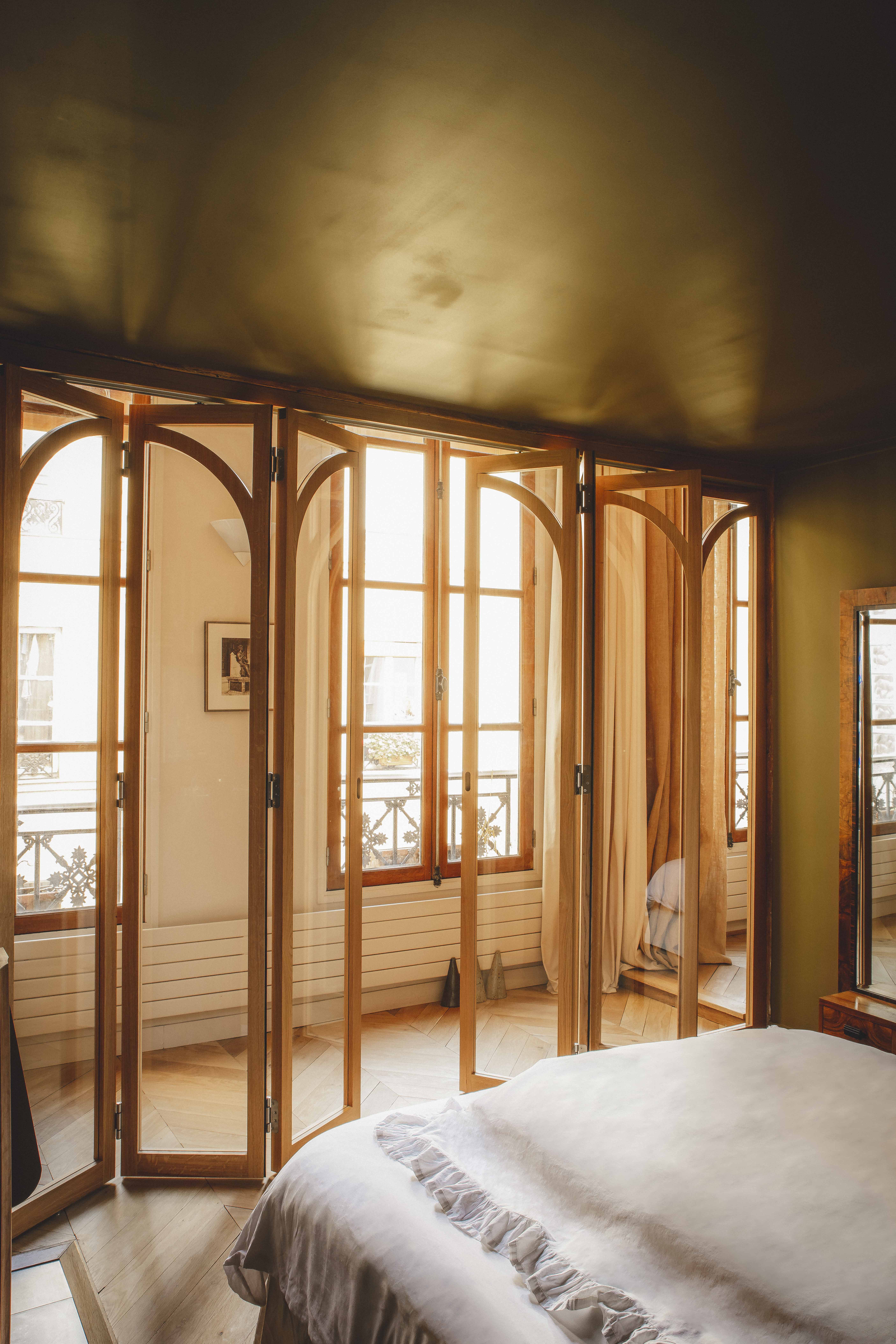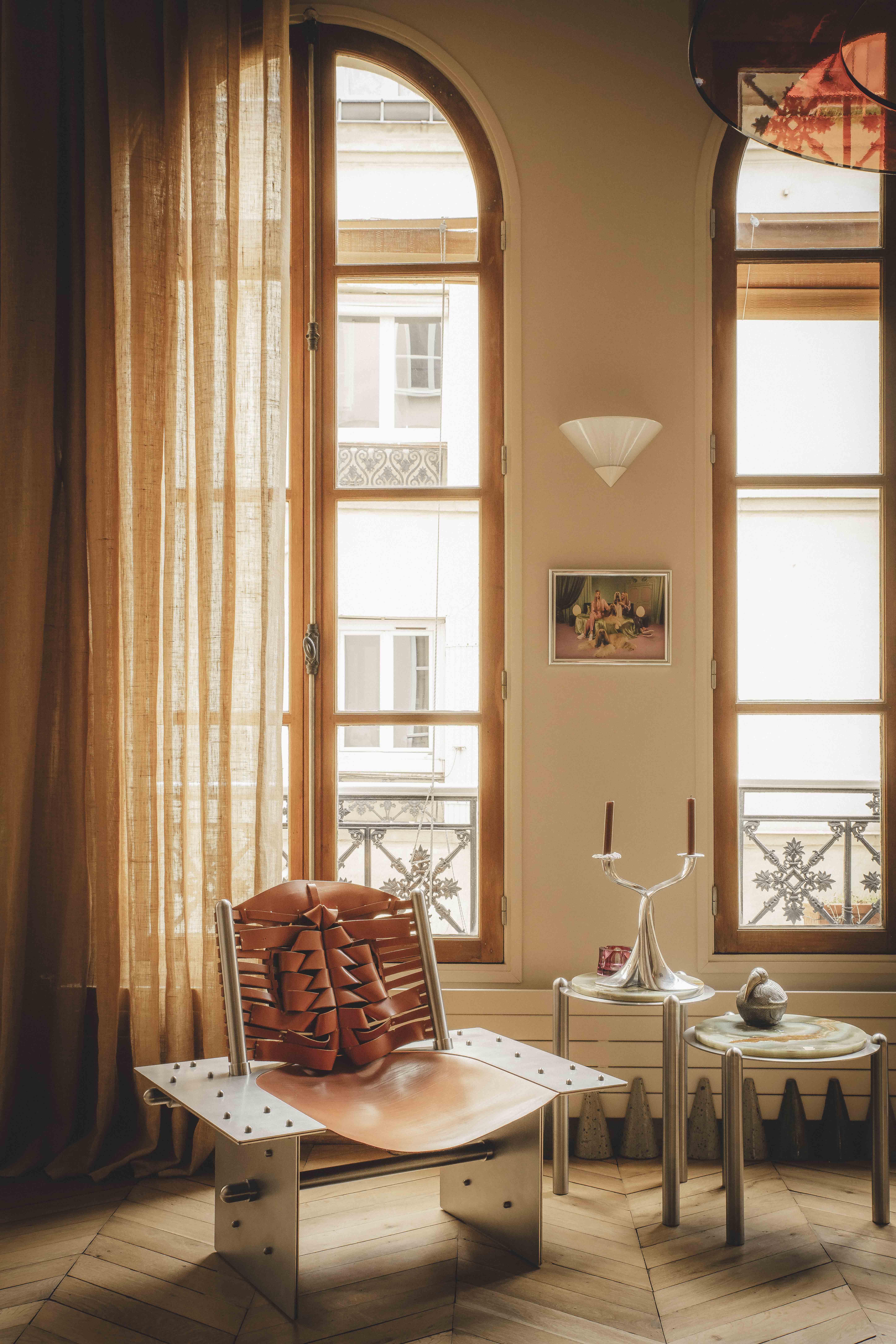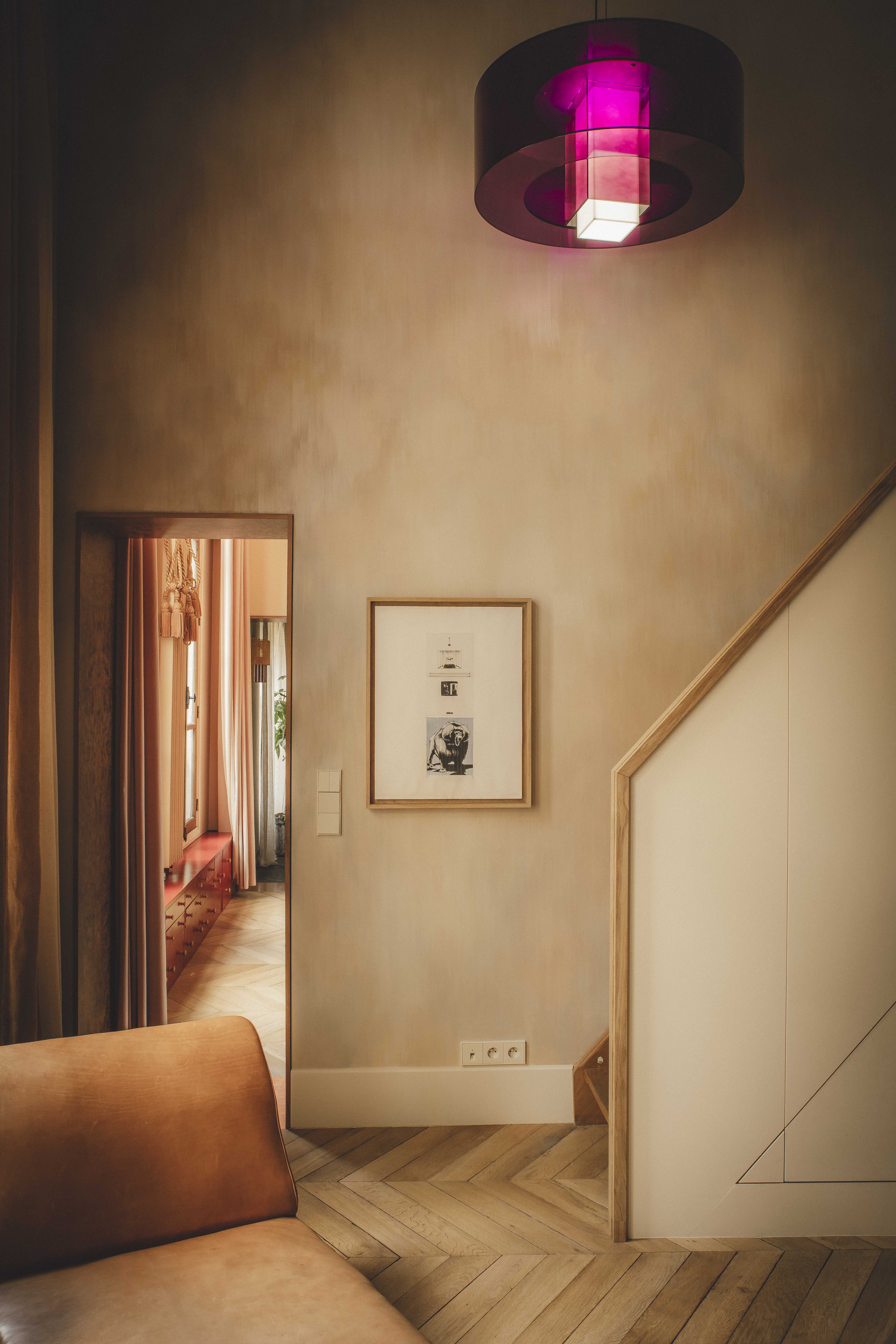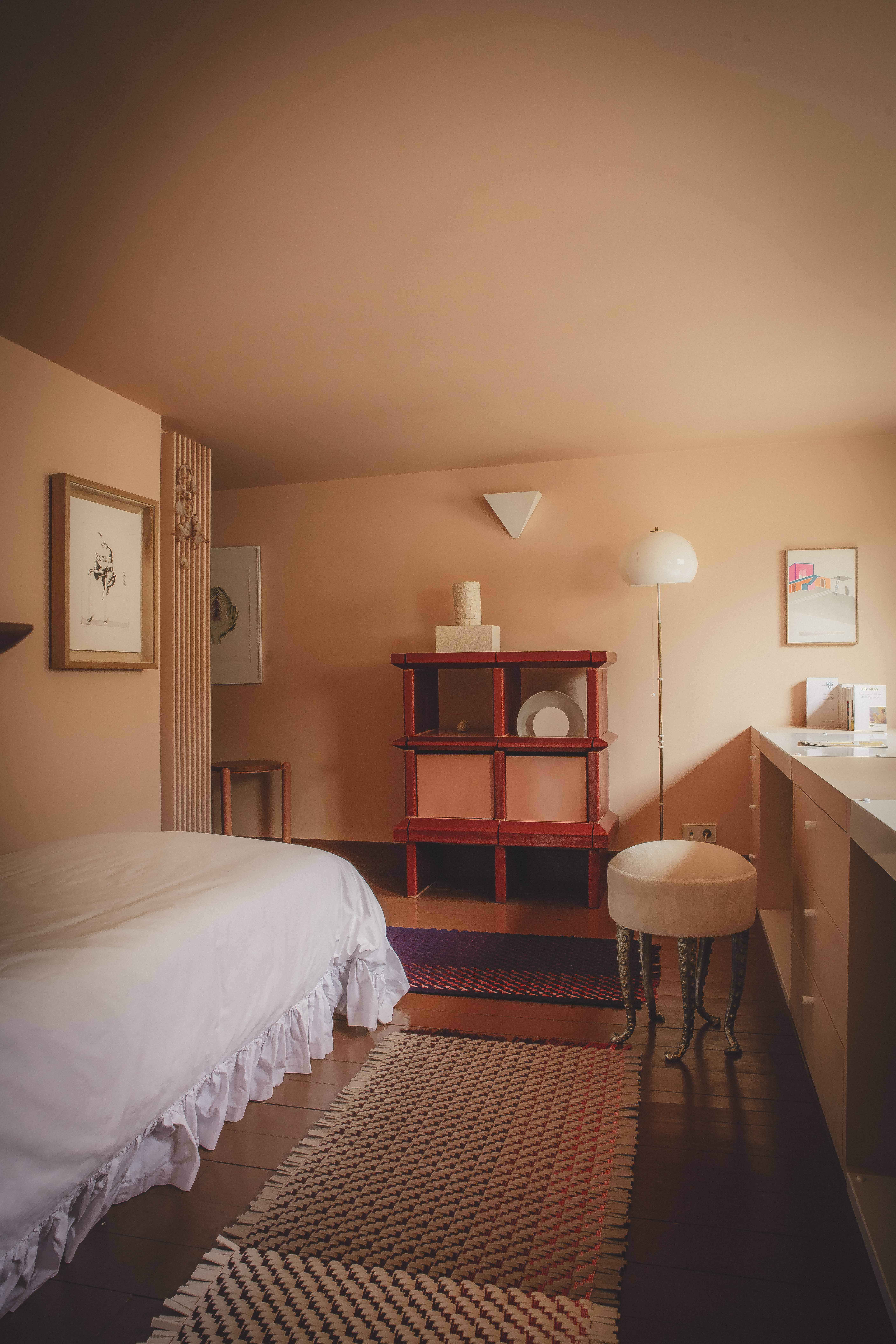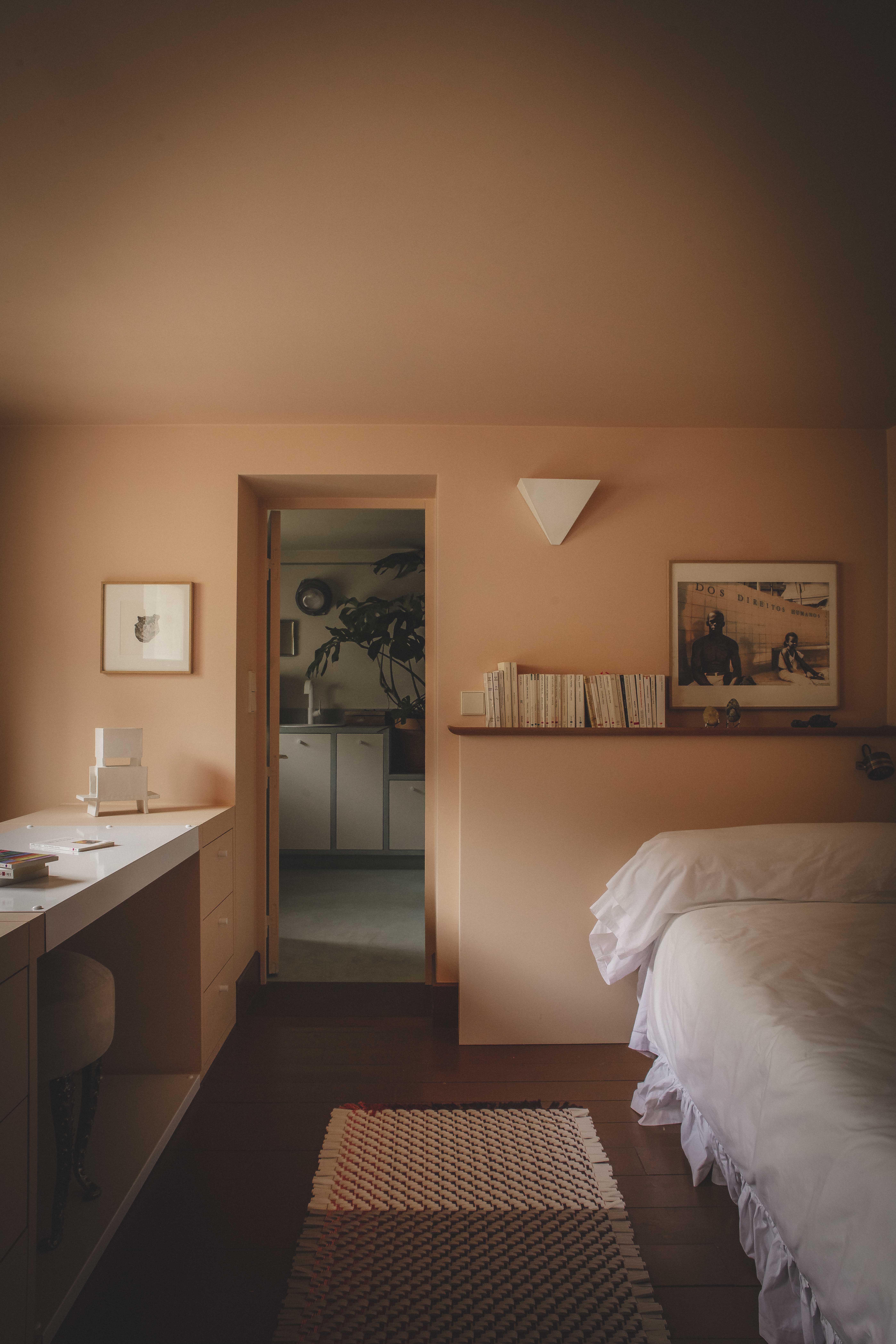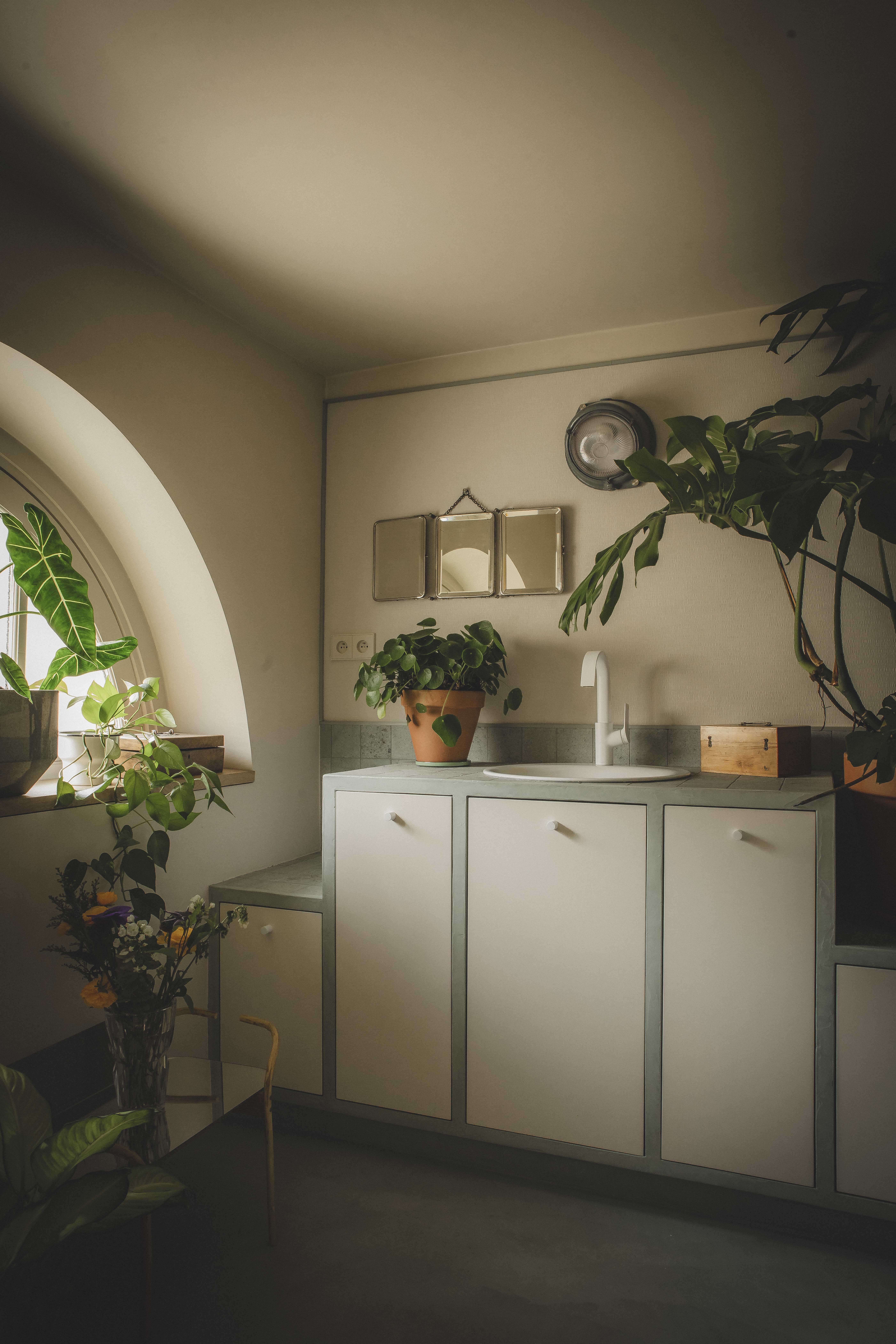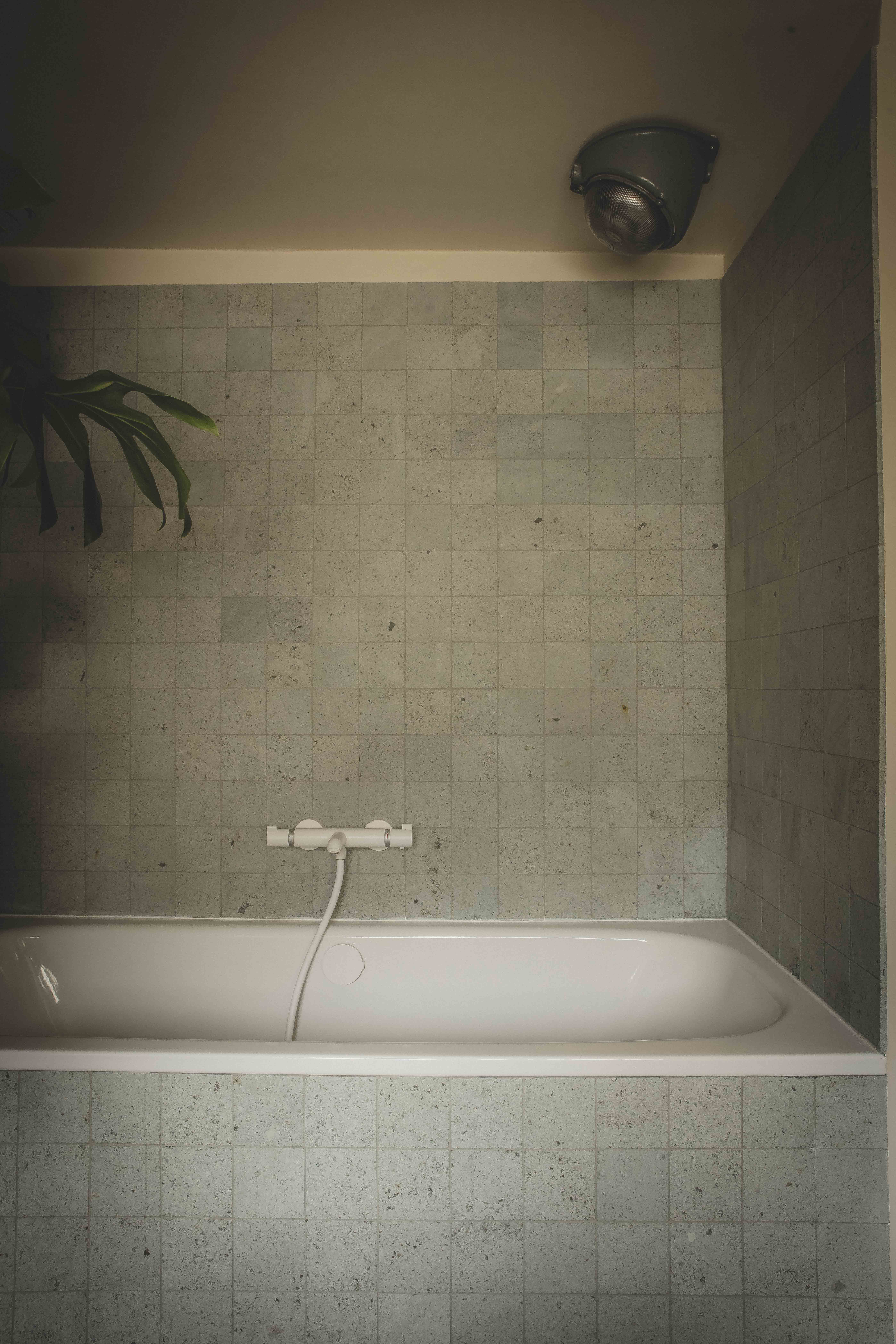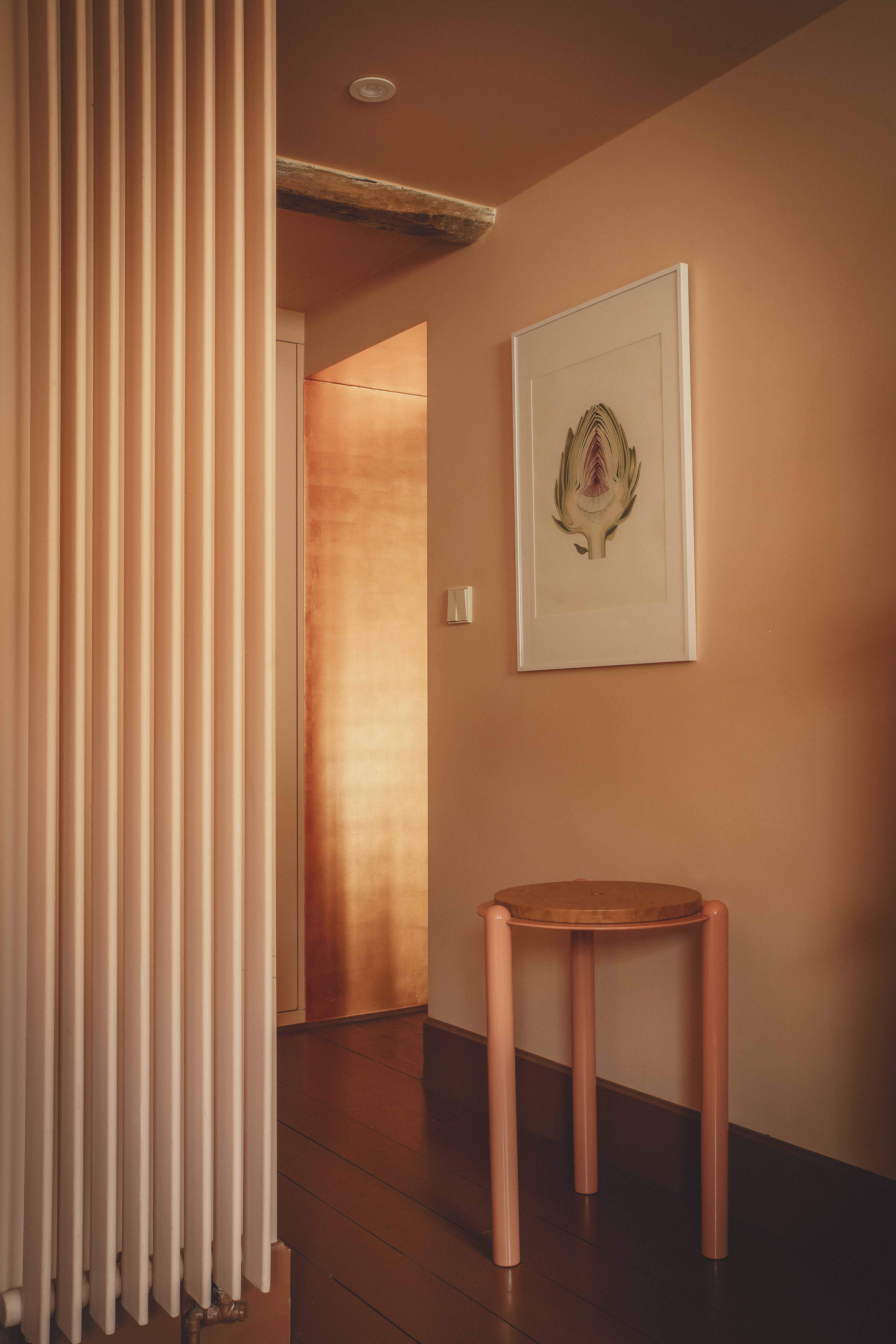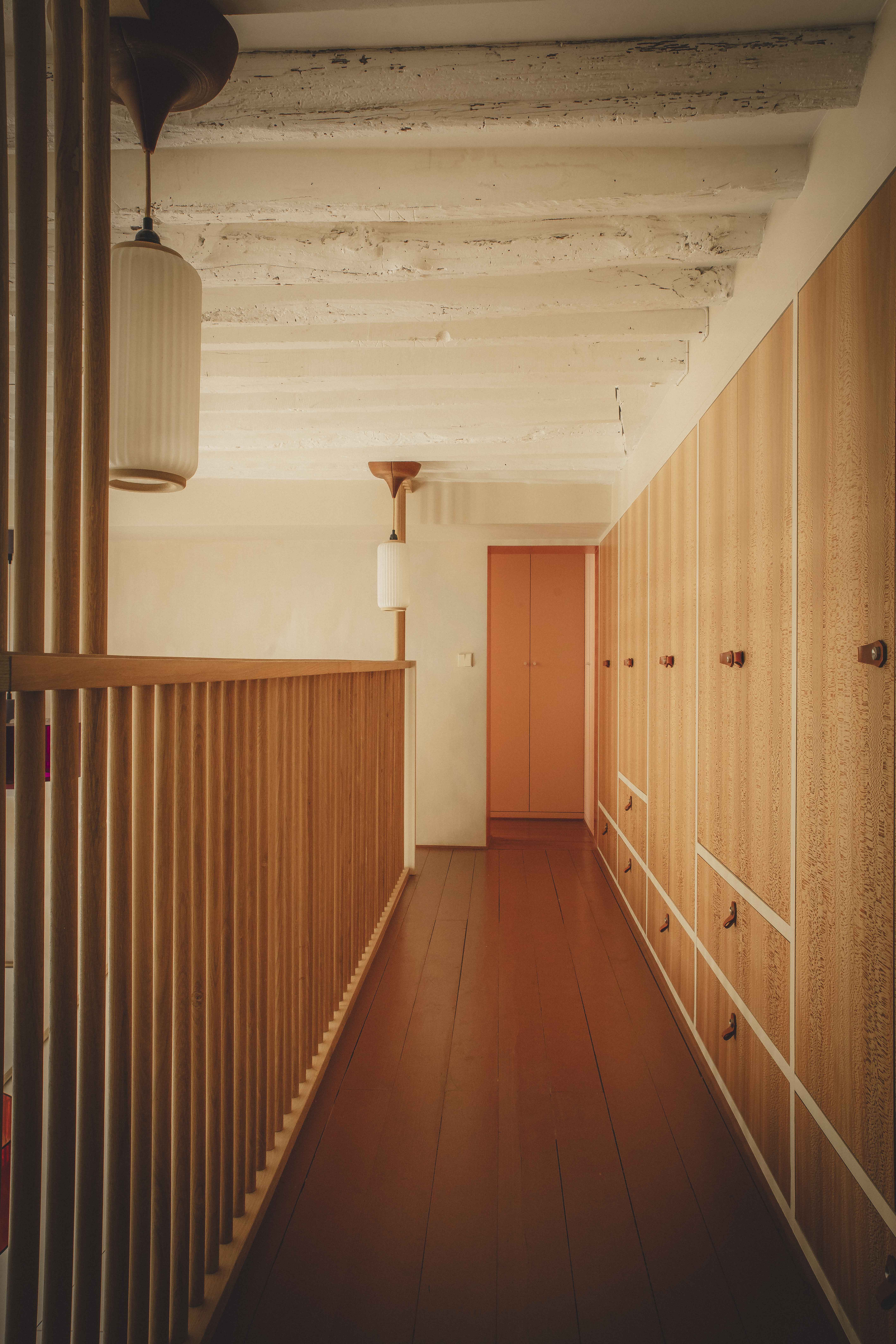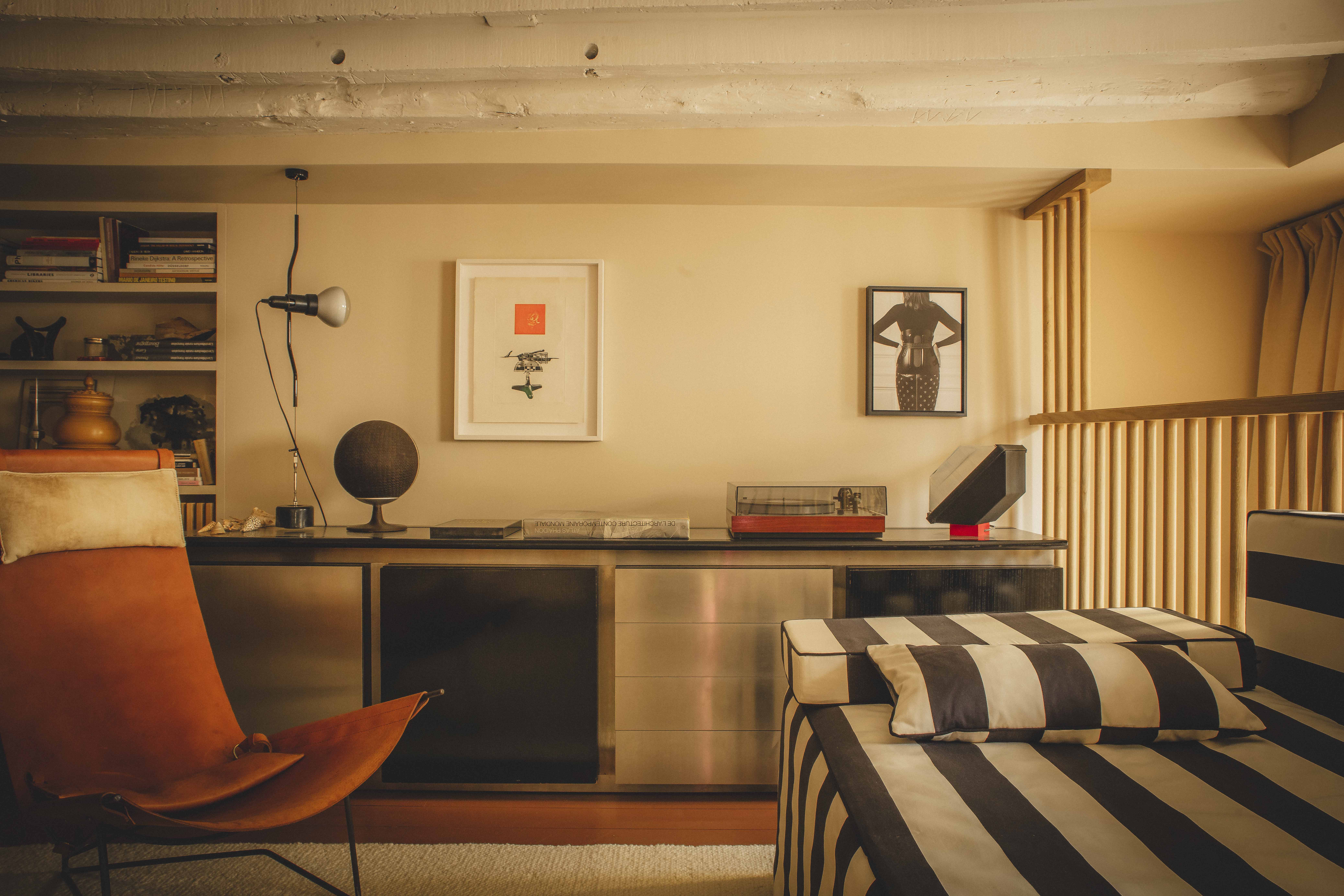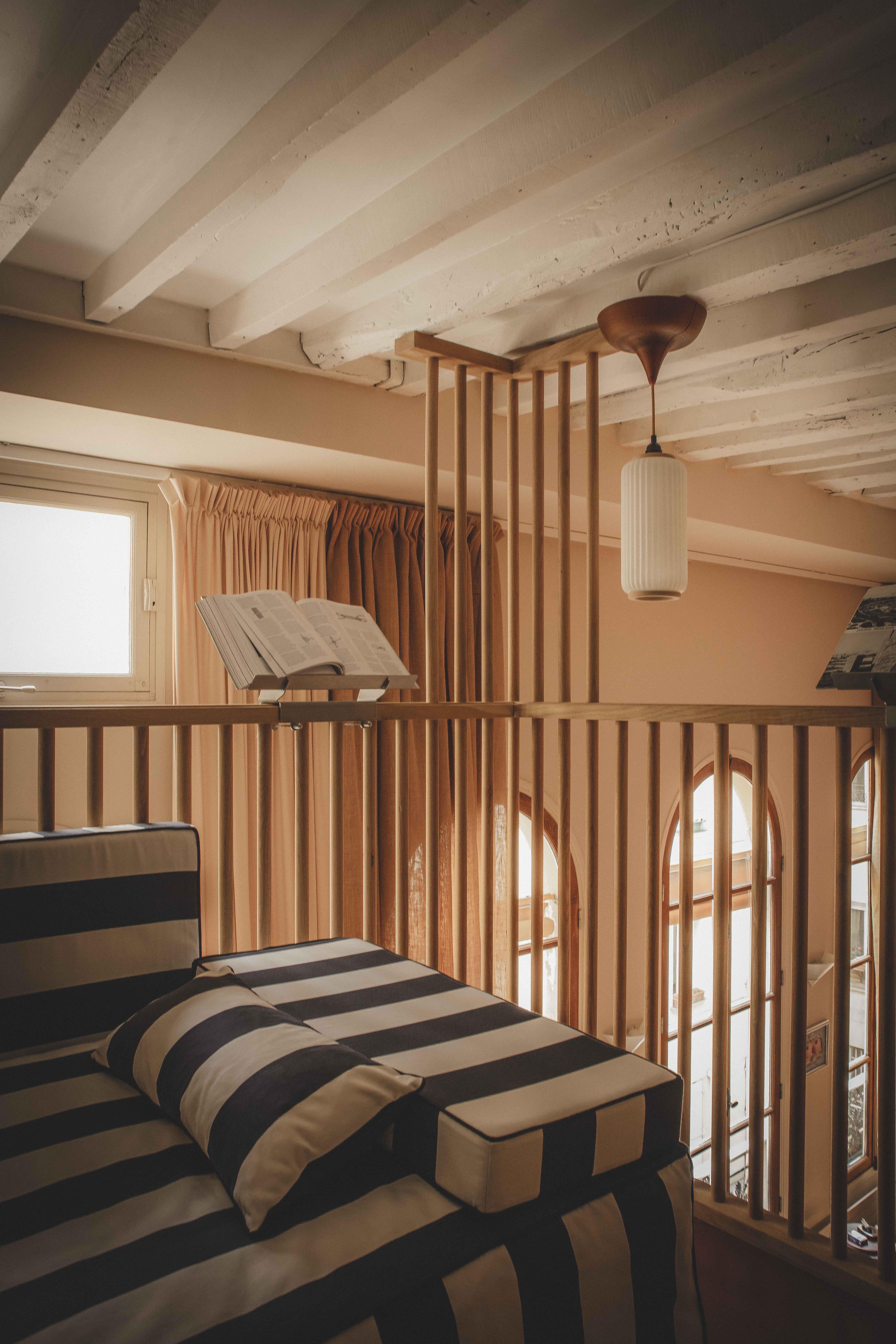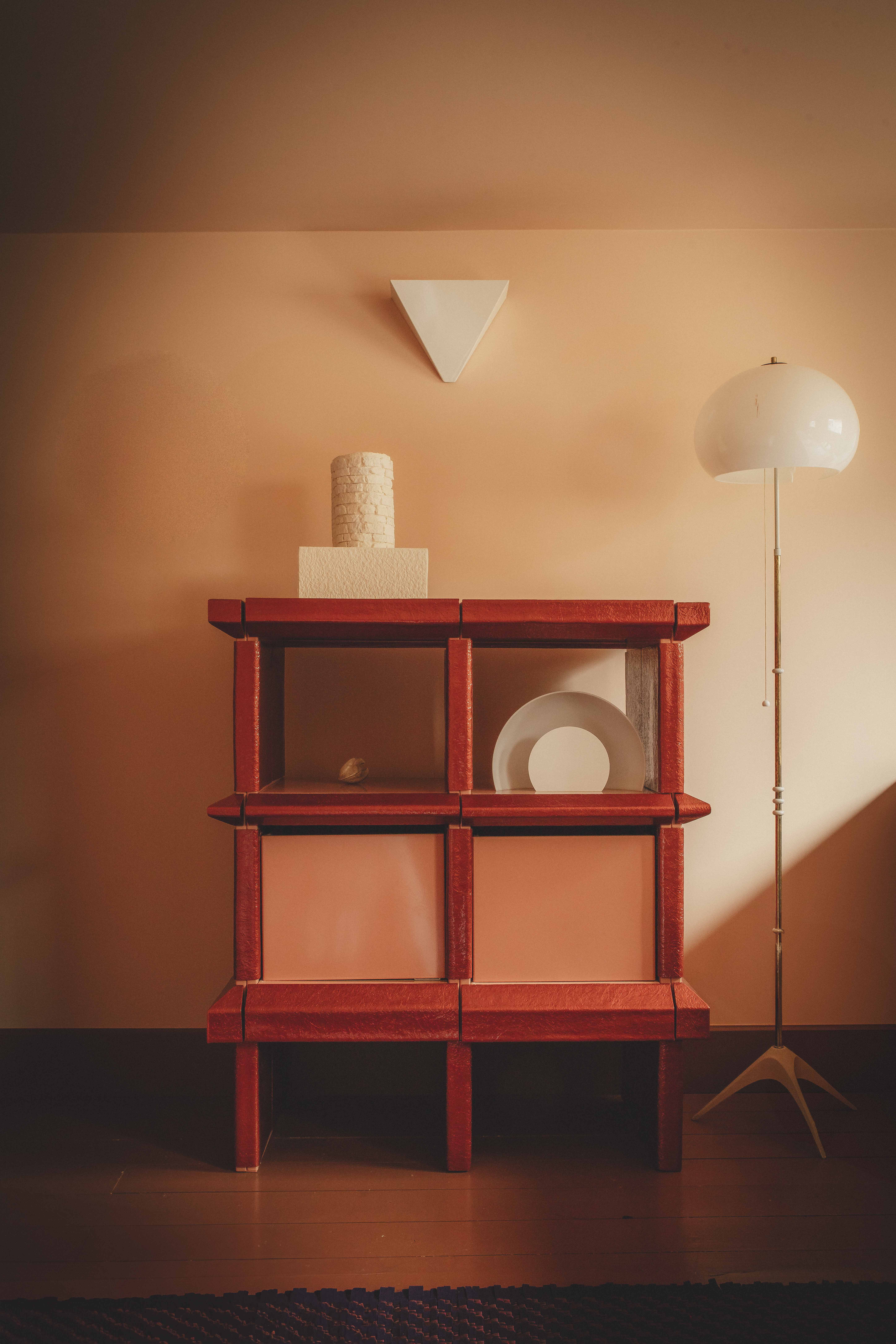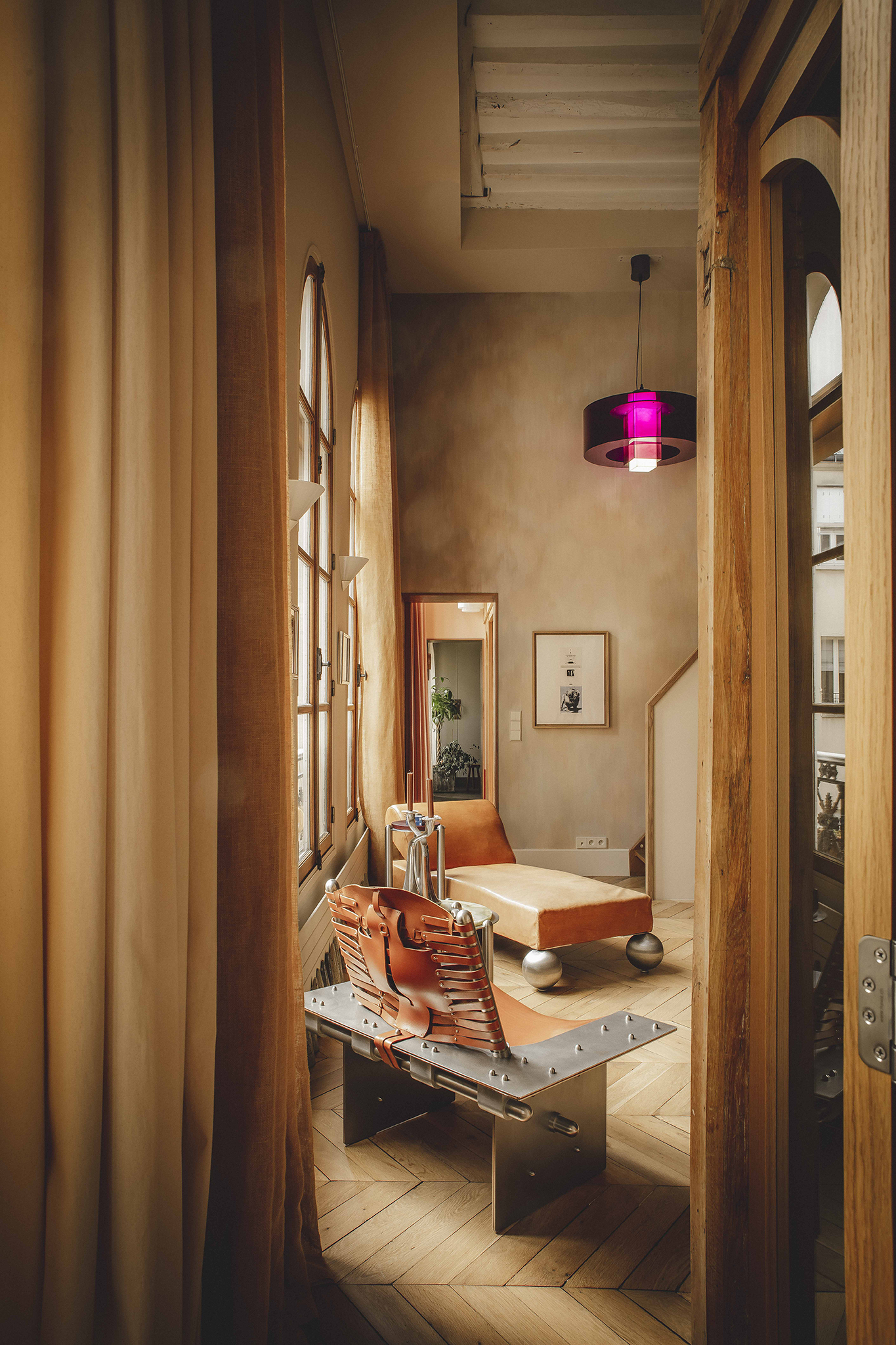
Parisian Chapel
DATE
2023
PHOTO CREDITS
© Matthieu Salvaing
Creation and production of the rehabilitation of a 115 m2 apartment in the Haut Marais district of Paris.
Complete restructuring of the duplex.

DATE
2023
PHOTO CREDITS
© Matthieu Salvaing
Creation and production of the rehabilitation of a 115 m2 apartment in the Haut Marais district of Paris.
Complete restructuring of the duplex.
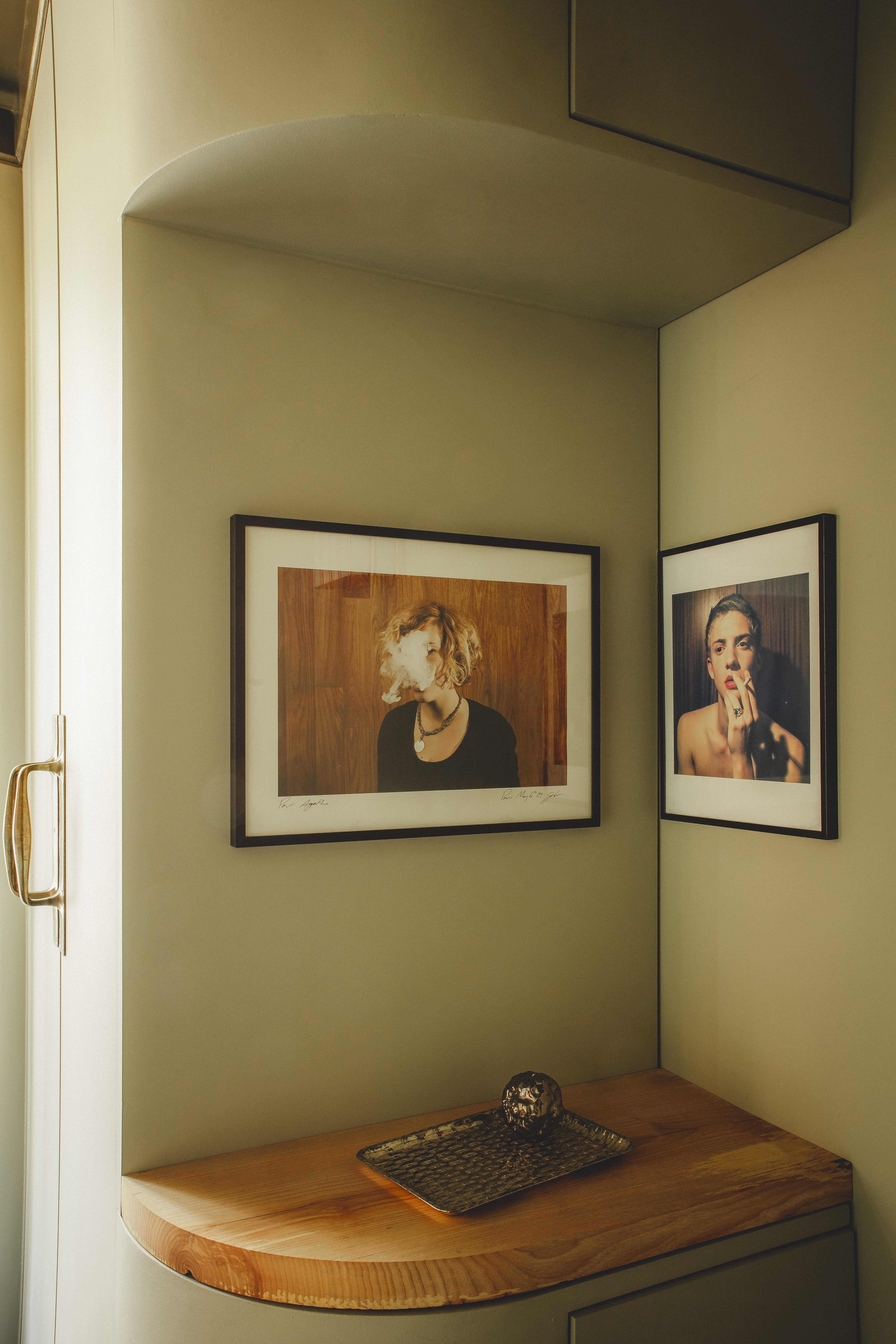
The Lancry apartment, a residence nestling in the heart of the Haut Marais district, offers a unique living experience in the chapel of a former convent. This singular space, set back from the courtyard street, is testimony to a rich architectural history, preserving the traces of its many transformations over time.
The apartment is distinguished by its exceptional volume, comprising three naves that follow one another along an imposing 17-metre-long corridor, under a 4.60-meter-high beam.
The longitudinal circulation is punctuated chromatically by a treatment in 3 successive shades between each load-bearing wall: a captivating chromatic perspective that gives rhythm to the spaces.
Each transition between the three naves is marked by meticulously crafted thresholds in burr elm and copper leaf.
The main nave, conceived as a central living space, is like a pit dominated by an interior balcony. A fresco by Redfield & Dattner creates visual harmony, subtly echoing the ‘warm-cool’ of the project’s colour scheme.
Colour, the central element of this design, creates micro-environments with different sensations, both within each space and across the transitions. Respecting the history of the existing architecture, the project takes advantage of the elements present in the flat and uses authentic, timeless materials.
The three naves bring together different types of use within the same volume. None of the spaces are strictly enclosed.
A combination of solid oak joinery and glazed windows, using the classic curved window motif on the façade, gives the freedom to open and close spaces like dioramas. Each room is a stage that opens and closes for the rest of the residents to see.
The kitchen at the heart of the central space becomes the reception area, while the areas dedicated to privacy are hidden behind curtained doors, preserving the ambiguity of the private-public boundary of these large open spaces.

